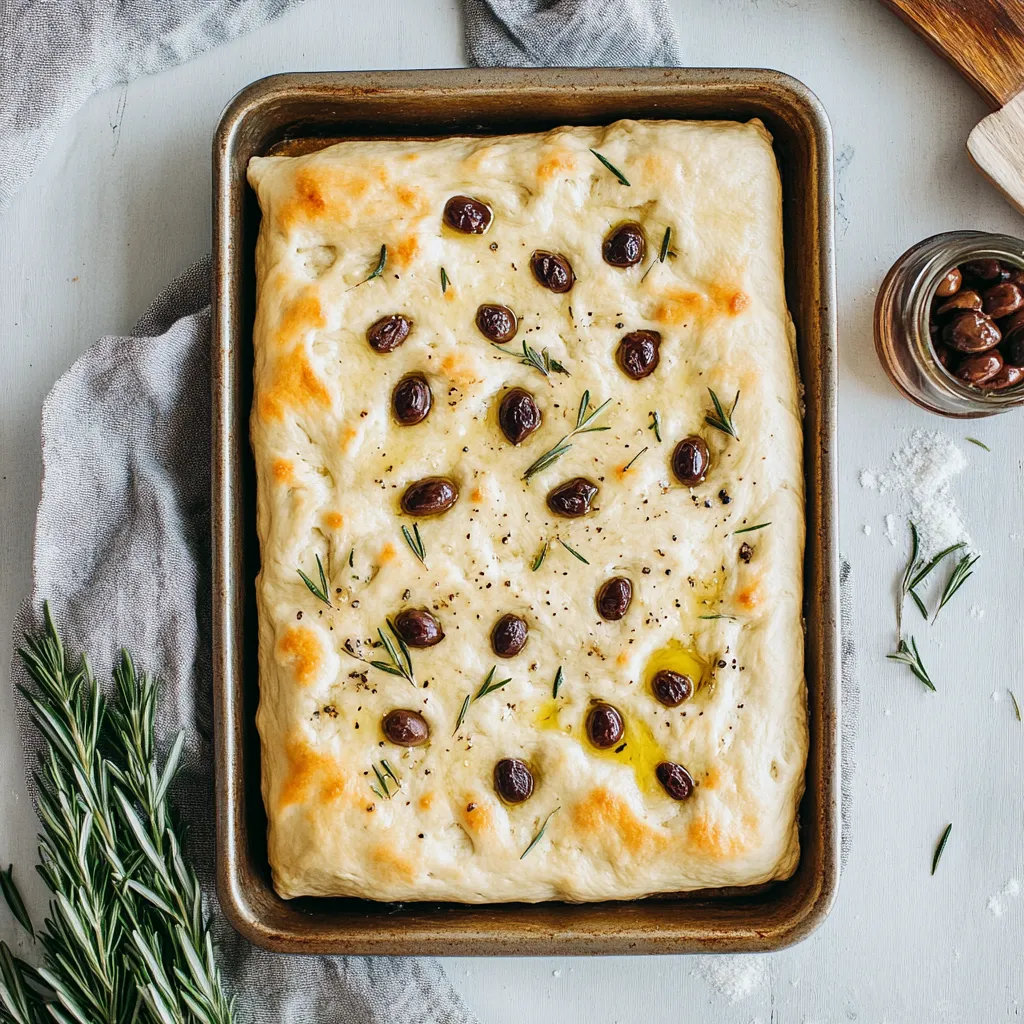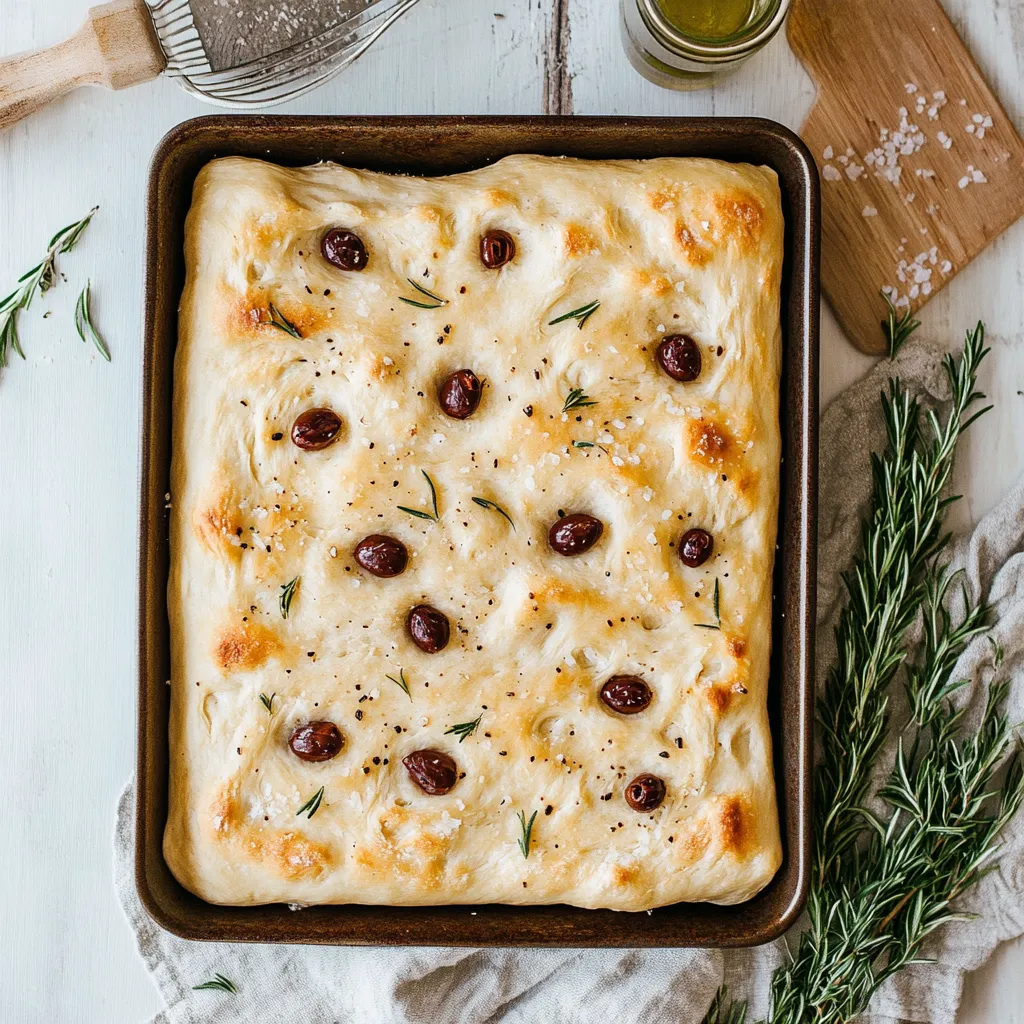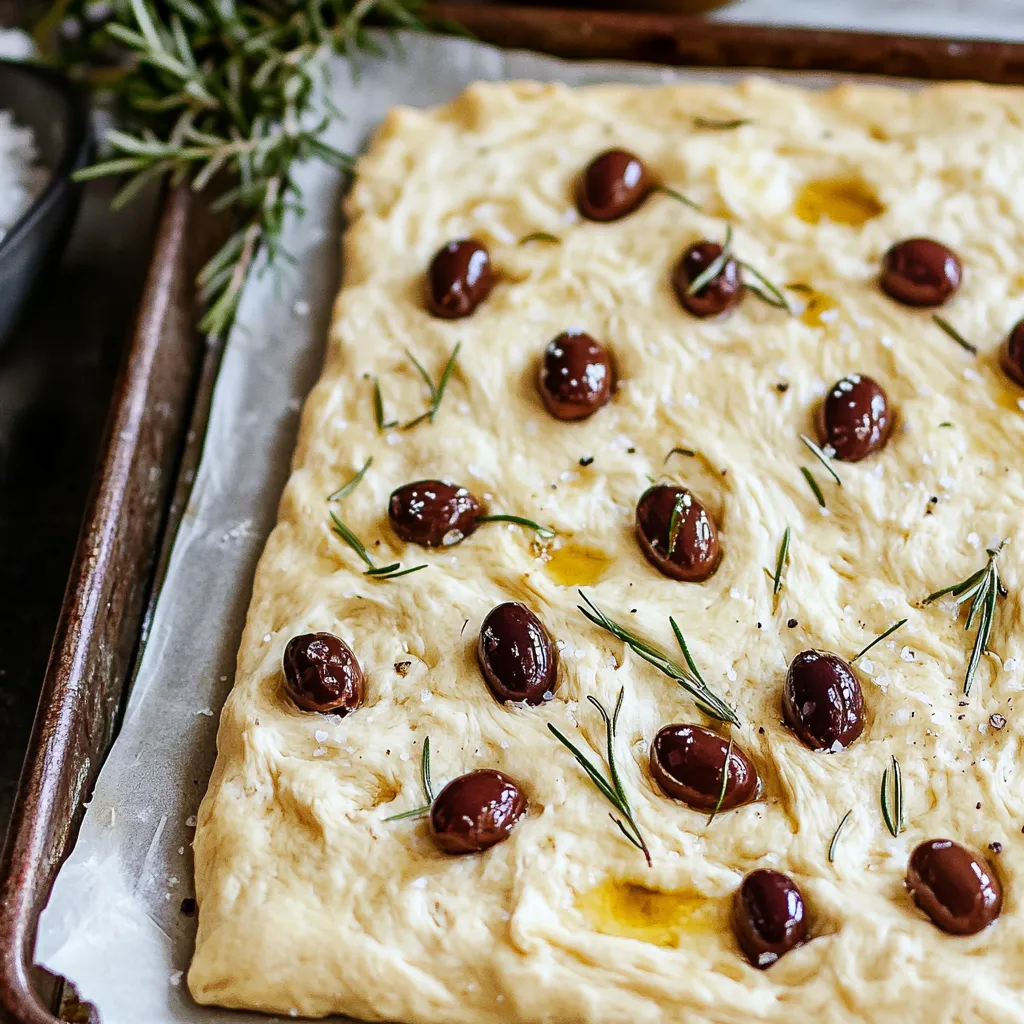 Pin it
Pin it
This sourdough focaccia brings a mix of classic Italian roots and deep flavors from slow fermentation, making every bite tough to resist. Expect loads of tiny bubbles inside and a crisp edge that almost crackles in your hands. Good olive oil gives it a rich, toasty outside and soaks the bread with flavor all through. It looks easy on the surface but nails that magical blend of a crunchy shell and soft, airy middle that just disappears as you chew.
Last summer at a family party, I baked this focaccia and served it with all kinds of Mediterranean spreads. My brother-in-law usually skips bread, but he went for thirds and wanted the how-to before heading home. Even my mom, who says sourdough never works for her, nailed it the first go by sticking to this approach.
Top-Notch Ingredients Only
- Salt: You’ll need both fine salt inside and big flakes on top. Salt helps keep the dough strong and tasty, while the finishing sprinkles add crunch and a salty burst.
- Olive Oil: Spring for top-shelf extra-virgin stuff—it really changes how your bread turns out, both taste and crunch-wise.
- Flour: Use a flour with solid protein, like bread or all-purpose (aim for at least 11%), or you’ll get a flat, tiny crumb with way fewer holes.
- Water: At roughly 87% water, this one's sticky and challenging, but you earn that dreamy texture. Use filtered water if your tap water’s super chlorinated.
- Sourdough Starter: Make sure your starter is in high gear—four to six hours post-feeding, all bubbly and doubled up, so it rises like crazy.
Next-Level Texture Tips
- Mastering the Dimples:
- Once your dough is fluffy and doubled up in the pan, oil your fingers well. Push all the way down without poking holes—your dimples should almost hit the bottom. The oil puddles here fry the dough just a little and catch extra toppings.
- Cool-Down Flavor Perks:
- After those last folds, let the dough keep puffing at room temp until you see bubbles and it’s a bit bigger. Then seal it up tight and stash it in the fridge overnight (or up to a day). This slow chill means yeast backs off but the good bacteria make tons of flavor.
- Dough Building—Stay Gentle:
- Pour water and your lively starter into a big bowl and whisk to blend. Add flour and salt, and mix with a spatula until it all comes together. Do four rounds of stretch and fold with a half hour wait each time. For each, pull dough up till it tugs back and fold over, moving the bowl each time. The dough toughens and springs up as you go.
- Starter Wake-Up:
- Make sure your starter is active. Stir together 25g starter, 50g flour, and 50g water (that’s a 1:2:2 mix) and watch it double up with lots of bubbles. Depending on your kitchen and how lively your starter is, it should be ready in four to eight hours.
 Pin it
Pin it
My grandma always said the secret was letting air bubbles ('alveoli') shine through your focaccia crumb. She’d hold up a piece to the light—if the biggest holes glowed, she called it a win. Her trick was never to rush those long waits. Time is what makes it perfect inside.
Fun Ways To Serve
Slice it up nice and big while it’s still a little warm for that perfect crust and soft middle. Lay out the squares on a big board next to bowls of herb-laced olive oil for dipping. Want to go fancy? Toss on some arugula, thin prosciutto, and big curls of Parmesan while it’s still warm. Or slice it sideways and load it up with good stuff—roasted peppers, mozzarella, fresh basil—for a picnic sandwich you’ll crave again.
Keeping It Fresh
Once totally cool, pop your focaccia in a paper bag for two days right on the counter to keep it just right. To make it last longer, wrap tight in plastic and freeze, up to a month. Warm up what’s left at 350°F for a few minutes to make it feel fresh again. For frozen bread, let it sit out to thaw, then heat it eight to ten minutes until crunchy. Skip putting it in the fridge—it'll stale way quicker. If it goes a bit chewy, just chop up the leftovers and roast the cubes with a splash of oil and spices for killer croutons.
 Pin it
Pin it
Frequently Asked Questions
- → Can I use commercial yeast instead of sourdough starter?
- This one relies on the sourdough starter to work its magic. Without it, you just won’t get that classic flavor or chewy bite. If you’re out of starter, look up a focaccia that’s specifically set up for yeast—you’ll need to change quite a few things.
- → Why is my focaccia dough so sticky?
- Focaccia dough likes to be super wet and tacky—don’t worry, that’s on purpose. That goes hand-in-hand with all those big airy bubbles. Skip tossing in more flour! Just slick your hands with olive oil to keep dough from sticking and trust the resting and folding will handle it.
- → Can I make this focaccia in a different sized pan?
- You sure can! Go smaller for a taller bread, pick a bigger pan for thin, crispy pieces, or try a round cake tin for a circle shape. Just don’t forget to keep an eye on your oven—chunky bread takes longer, thin bread cooks fast.
- → What other toppings can I use on focaccia?
- You’ve got options: go wild with thin tomato slices, add some sweet caramelized onions, roast up garlic, sprinkle on sun-dried tomatoes or switch up the herbs—thyme or oregano work great. Even thin potato slices! If you go the veggie route, dry them off—you don’t want soggy bread.
- → How do I store leftover focaccia?
- Let the bread cool, then keep it wrapped in a towel or pop it in a sealed box on the counter for up to two days. If you need longer, slice it and put it in the freezer for up to three months. Want it warm again? A quick bake at 350°F for a few minutes will perk it up.
